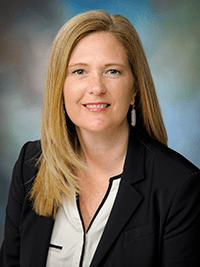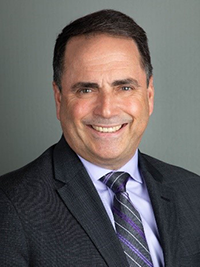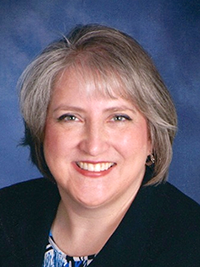Revenue cycle leaders: How they optimized financial performance for outpatient and ancillary services
Over the last decade, outpatient and ancillary services have typically yielded high profit margins for healthcare organizations. However, today’s organizations cannot ignore consumers’ demand for low-cost, high-quality care. This, coupled with inflation and, per updated Peterson-KFF data, an increase in the cost of hospital outpatient services by 8.3% specifically, has opened the door for lower-cost competitors that may cut into a hospital’s long-standing financial margins. In this roundtable, sponsored by XiFin, several revenue cycle leaders discuss their strategies to optimize financial performance.
How does your healthcare organization view the importance of outpatient diagnostic and ancillary services to the fulfillment of its mission? What has changed in the last 10 years?
STEPHEN FORNEY: Outpatient diagnostic and ancillary services have been integral to our mission for a long time, and we have a fairly substantial ambulatory footprint around all of our hospitals. Our emphasis on these services continues to increase as payers prioritize cost containment. Here’s what has changed in the last decade: Traditionally, the margin in healthcare has been with outpatient diagnostic and ancillary services. The incremental cost of performing a CT scan, for example, is almost nothing. But now there are more competitors in this space, and payers are steering patients toward low-cost alternatives. This means hospitals must compete in ways other than price — creating better access, having better customer service and offering the widest variety of services possible.
EMILY GOERTZ: These services are particularly important to us, and our volumes have increased significantly over the last decade thanks to our work- around promoting internal referrals.
RICHARD NAGY: We believe it’s very important to support the community and increase patient access, which is why we’ve increased outpatient diagnostic and ancillary service offerings in our physician offices. We’re also part of a large accountable care organization, so we’re also very cognizant of providing services in the most economical setting for the patient. The patient always comes first, and the patient is at the center of everything we do.
RICHARD SILVERIA: Outpatient diagnostic and ancillary services are critical to supporting our mission of diagnosing illness and improving the health status of those we serve. We have a large aging population that must be able to access diagnostic care as quickly as possible — especially when there’s a potential cancer diagnosis. Patients need to be seen, tested and on their way to treatment. They need access to care that’s not an hour or more away in Boston or other parts of the state, and we’ve tried to keep care [local] when it’s safe and effective to do so. What continues to change are payment bundling rules, medical necessity policies and the specificity of clinical criteria necessary for prior authorizations. So, getting paid for services rendered has become increasingly challenging.
JANE HERMANSEN: A community-based diagnostics program has many moving parts, and they must all be in sync with each other in order to be effective. Next to delivering excellent patient care, managing revenue cycle effectively is critical to success. Optimizing billing and collecting processes can make the difference between a profitable diagnostics service line and one that is under financial scrutiny. The difference may be due to the fact that many organizations are not skilled in issuing or collecting the high-volume, low-dollar claims that are the backbone of outpatient diagnostics billing. Having a dedicated RCM process can improve the patient billing experience, decrease unpaid bills and increase revenue overall.
How do you or your organization evaluate the financial performance of these departments? Which key performance indicators are most important?
FORNEY: We routinely evaluate reimbursement versus cost for existing services and any potentially new services. We also monitor patient access and track internal referrals. If the first available appointment for a CT scan is 30 days out, this is a problem. When we see that number, we start asking questions: Is a technician out on vacation? Do we need to purchase an additional CT machine? When patients need testing, they need it quickly. If we can’t accommodate them, they’ll go elsewhere, and that’s lost revenue for us. In addition, we also track physicians who refer out of our system to understand the reasons why this might happen. For example, we might not have the modality the patient needs, or the testing might be part of a larger treatment plan for services we don’t provide such as advanced cancer treatment.
GOERTZ: We created a revenue integrity team that meets monthly with clinicians to look more closely at our denials and avoidable write-offs. In addition, we’ve focused on point-of-service collections. Our EHR [electronic health record] allows us to enable automated cost estimates as soon as the provider enters an order. Patients see these estimates in their portal immediately. This has improved the patient financial experience and helped us improve financial performance.
NAGY: We constantly monitor business plans against actual performance and look for variances. For example, if patient volume is lower than expected at a particular location, we might question whether the service is truly needed there. However, as an integrated delivery network, we evaluate access for both our patients and insurance plan members, which may drive volume to certain locations. For example, insurance plans might drive radiology exams to stand-alone sites, or they might have a preferred lab for lab draws. To address this, we must negotiate payer contracts that include our outpatient diagnostic and ancillary locations as well.
SILVERIA: We monitor access — specifically the turnaround time from the physician order to the day on which the patient receives the actual outpatient diagnostic or ancillary service. We also monitor traditional metrics like initial claim denial rates. Payers deny claims for outpatient diagnostic and ancillary services for many reasons. For example, it could be that the diagnosis does not support the test, or it could be that the test the provider performed doesn’t match the one listed on the prior authorization. Or maybe staff obtained an authorization for the MRI but not the contrast media. When claims are denied, providers usually have 90 days to correct them, but if you keep making errors, you could end up with a backlog of 20% of your claims. You’re trying to submit current claims while also resubmitting denied ones, and most providers can’t keep up with this volume. That’s where you can get into financial trouble with illiquid accounts receivable.
To support financial performance in outpatient diagnostic and ancillary services, what approach did your hospital take?
FORNEY: We outsourced our entire revenue cycle, including our call center, scheduling, authorizations, coding, billing and denial management. We did this to leverage efficiencies and tools that come with economies of scale. We found an outsource company with a large footprint that invested in technology and could implement best practices from around the country. I’m a proponent of the end-to-end model because when you start handing pieces of the revenue cycle to different companies, you don’t get the proper coordination, and you may get a lot of finger-pointing. We’ve been more mindful in terms of whether we purchase or finance diagnostic equipment. We’ve had to look at the total all-in cost in terms of the machine itself, our payer mix, maintenance costs and the annuity value if we keep the machine busy. These are complex decisions with potentially big financial ramifications.
GOERTZ: We’ve done a lot of work around physician education in terms of the importance of internal referrals and making sure the order is accurate. We’ve tried to focus on getting the right services authorized to prevent downstream problems. To enable this, we’ve leveraged functionality in our EHR to cross-check information in the order with procedure notes to identify cases when the surgeon performs a procedure other than the one [that] they intended originally. Then we route this information back to the revenue cycle department for an updated authorization prior to claim submission. This has helped significantly with denials.
NAGY: Because we cover a very wide geographic area, we try to centralize the availability of ancillary services, when possible, while also providing these services where they’re needed most. For example, in rural areas, we’ve opened several 10-bed neighborhood hospitals that also include physician offices and infusion centers. We’ve seen improved patient satisfaction scores as a result of our efforts and think of ourselves as the high-quality, low-cost alternative.
SILVERIA: Because of our patient demographics, we’ve had to really focus on alleviating the administrative burden associated with Medicare Advantage prior authorizations. To do this, we brought everyone in our health system onto the same electronic health record so we could share clinical information, including diagnostic information and results and images, across the Cape. We also invested in scheduling and prior authorization tools to help us comply with the No Surprises Act and the more stringent Massachusetts law, Patients First. We’re trying to help patients understand whether they’re in-network or out-of-network and what their financial responsibility might be. These efforts have helped us with patient collections. In addition, we have a joint venture agreement with a freestanding MRI to increase access. They can get patients in more quickly at a lower cost in some instances, which is helpful for us in terms of securing risk-based contracts with payers. Finally, as we look ahead, we want to implement more artificial intelligence (AI) and deep machine learning to help augment clinical decision-making but also to help us look for patterns in the data in terms of denials and underpayments for outpatient diagnostic and ancillary services. We need to use AI to keep up with payers that also use it. The battle of the bots is coming to the provider payment process, and it’s coming sooner than we think. This is especially true in the ancillary space where it’s all about high-volume claims.
What factors led to your organization’s approach, and how successful has it been?
FORNEY: When we implemented a new electronic health record in 2018, it highlighted all of the weaknesses in our revenue cycle, and we knew we needed help. The outsource partnership has ultimately been very successful. We’ve met and exceeded our financial goals every year.
GOERTZ: All of our efforts around physician education, internal referrals and revenue integrity have led to higher patient volumes, decreased denials and increased revenue. However, one unanticipated snag was the Change Healthcare cybersecurity breach. Change Healthcare was our sole clearinghouse, and we couldn’t get claims out the door between Feb. 21 and mid-March. We were holding probably close to $200 million during that time. For the most part, we’ve recovered, but we still have some outstanding remittance issues. That incident made us realize we need a clearinghouse continency plan especially for high volume service areas. We’re working on having multiple clearinghouses — for example, one for hospital billing and one for professional billing or one for commercial claims and another for government claims.
NAGY: Our efforts to increase patient access have been incredibly successful. By expanding outpatient diagnostic and ancillary services into areas where there is a community need and offering extended office hours, we’ve increased our outpatient visit volumes and decreased our costs. One caveat is that we’re in a very high inflationary period post COVID. We’re seeing up to 10% increases in inflation annually, and payers aren’t always willing to match this. Supply costs have also risen at a phenomenal rate, and we’ve done a lot to try and manage that through regional purchasing agreements. These agreements have helped us ensure we have enough supplies when there are shortages as well.
SILVERIA: By training intake staff and physicians around compliant prior authorizations, we’ve been able to increase claims payments. However, the challenge is that payers aren’t always geared up to provide quick authorizations, and this can lead to delays that can cause patient and clinician frustration.
When it comes to your RCM journey in outpatient diagnostic and ancillary services, are there any best practices or hard-won lessons you’d like to share?
FORNEY: Standardization is key. Once you determine the best practice for a process related to outpatient diagnostic and ancillary services, standardize that process across all locations to prevent denials and ensure a consistently positive patient experience.
GOERTZ: Don’t underestimate the importance of the physician order. The order is the document on which prior authorizations and cost estimates are based. It’s critical to get it right.
NAGY: Listen to patients. They’ll tell you what’s working and what’s not working.
SILVERIA: Do your homework before expanding outpatient diagnostic and ancillary services. Think about whether there are active competitors in your market that may build capacity to compete for market share. Investments must be right-sized. Something else we learned is that if you have high payer denials and a high claims-resolution rate, you need to go back to the payer and try to create some administrative efficiencies that ultimately improve everyone’s experiences, including the patient’s experience. Finally, we learned that you need to be proactive about addressing labor shortages through automation and consider tactics that enable leveraging a global workforce.
Conclusion
As healthcare organizations look ahead to optimize financial performance for outpatient and ancillary services, there are many strategies to consider such as promoting internal referrals, providing greater price transparency, monitoring key performance indicators, investing in automation and outsourcing. Identifying the right strategy for each organization is paramount. Using a mindful approach can yield one that leverages people, processes and technology while simultaneously fulfilling the mission of the organization.
Panelists

STEPHEN FORNEY, FHFMA, MBA, CPA
Senior vice president and CFO at Covenant Health in Andover, Mass.

EMILY M. GOERTZ, CHFP, MBA, CPAM
Vice president revenue cycle operations at the University of Texas Medical Branch (UTMB) in Galveston, Texas.

RICHARD T. NAGY, FHFMA
Vice president of managed care at Allegheny Health Network in Pittsburgh, Pa.

RICHARD SILVERIA, MBA
Senior vice president and CFO at Cape Cod Healthcare, Inc. in Cape Cod, Mass.

JANE HERMANSEN
Director, Laboratory Outreach Development, Mayo Clinic Laboratories, Rochester, Minn.
About XiFin
XiFin, based in San Diego, California, is a healthcare information technology company that empowers hospitals, health systems, IDNs, and healthcare organizations to navigate an increasingly complex and evolving healthcare landscape. Through innovative AI-enabled technologies and services, we deliver operational efficiency, interoperability, and simplicity. The company’s revenue cycle management, clinical workflow enablement, laboratory information system, and patient engagement solutions enable organizations to achieve stronger finances, streamline operations, and develop industry-leading business strategies. XiFin solutions deliver THE POWER TO DO GOOD™ so that healthcare organizations can do more good for more patients. Visit www.XiFin.com, follow XiFin on LinkedIn, or subscribe to the XiFin blog to learn more.
This published piece is provided solely for informational purposes. HFMA does not endorse the published material or warrant or guarantee its accuracy. The statements and opinions by participants are those of the participants and not those of HFMA. References to commercial manufacturers, vendors, products, or services that may appear do not constitute endorsements by HFMA.






